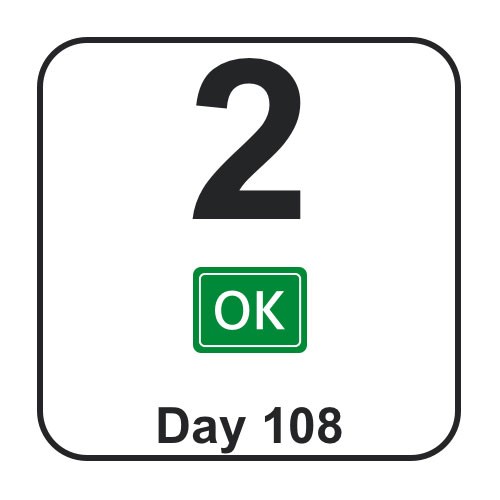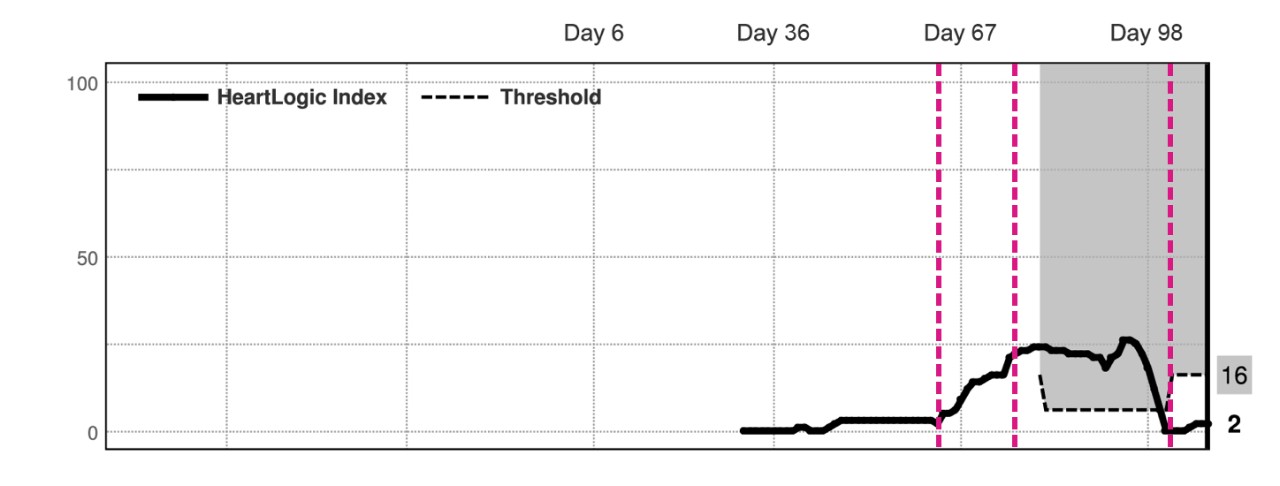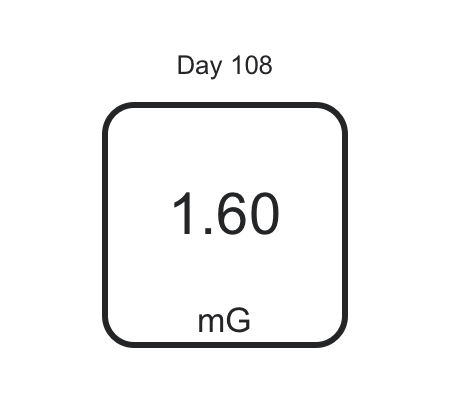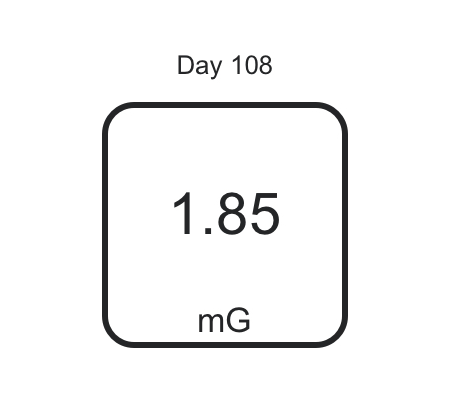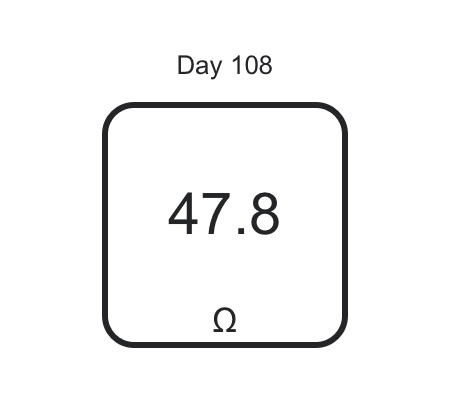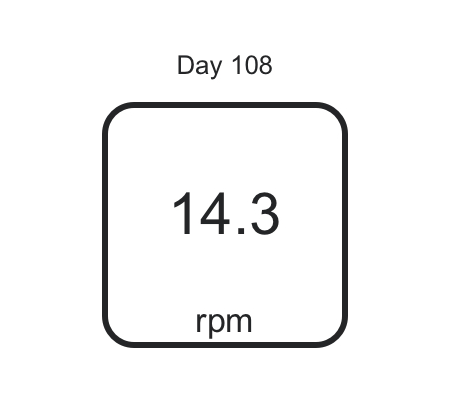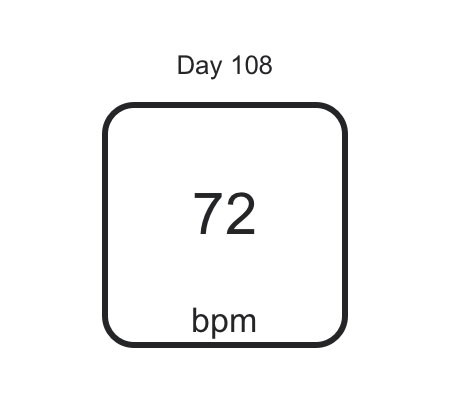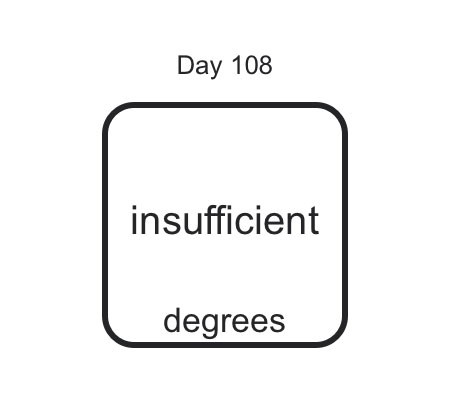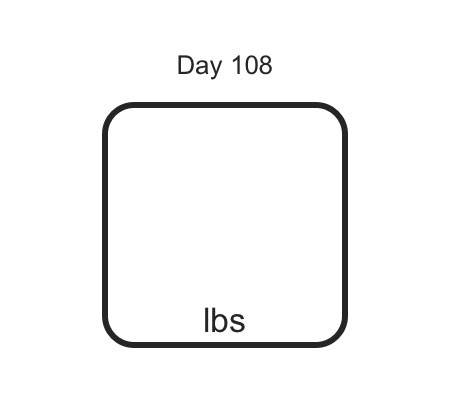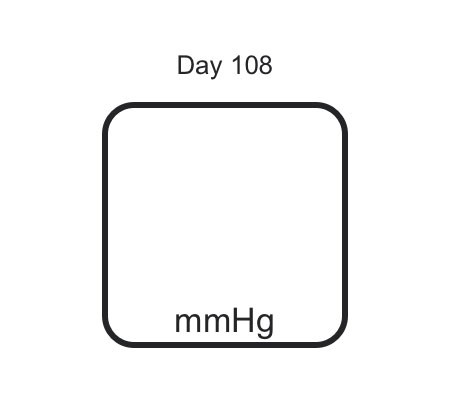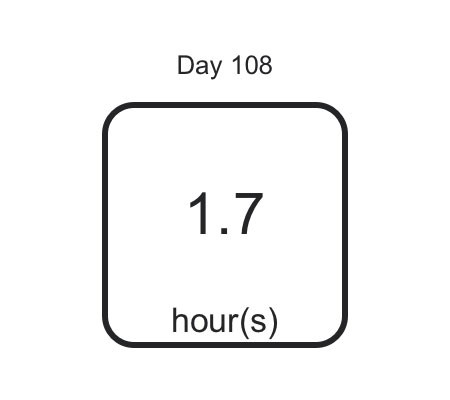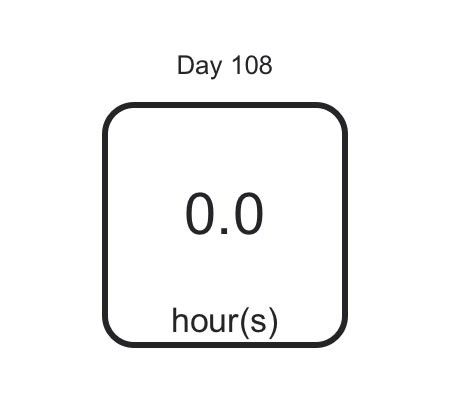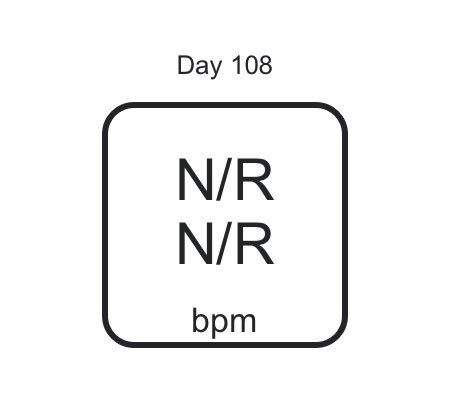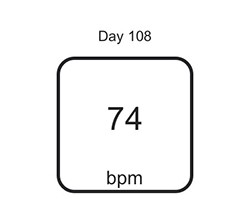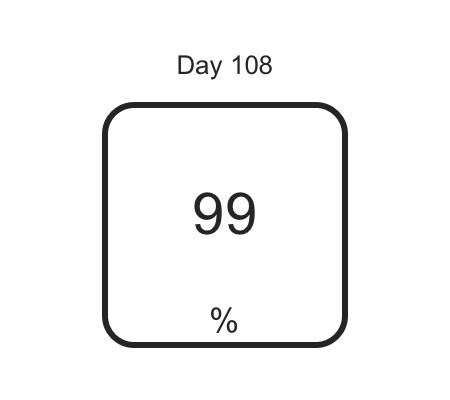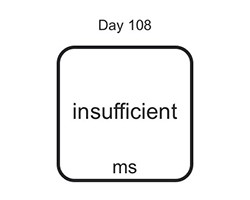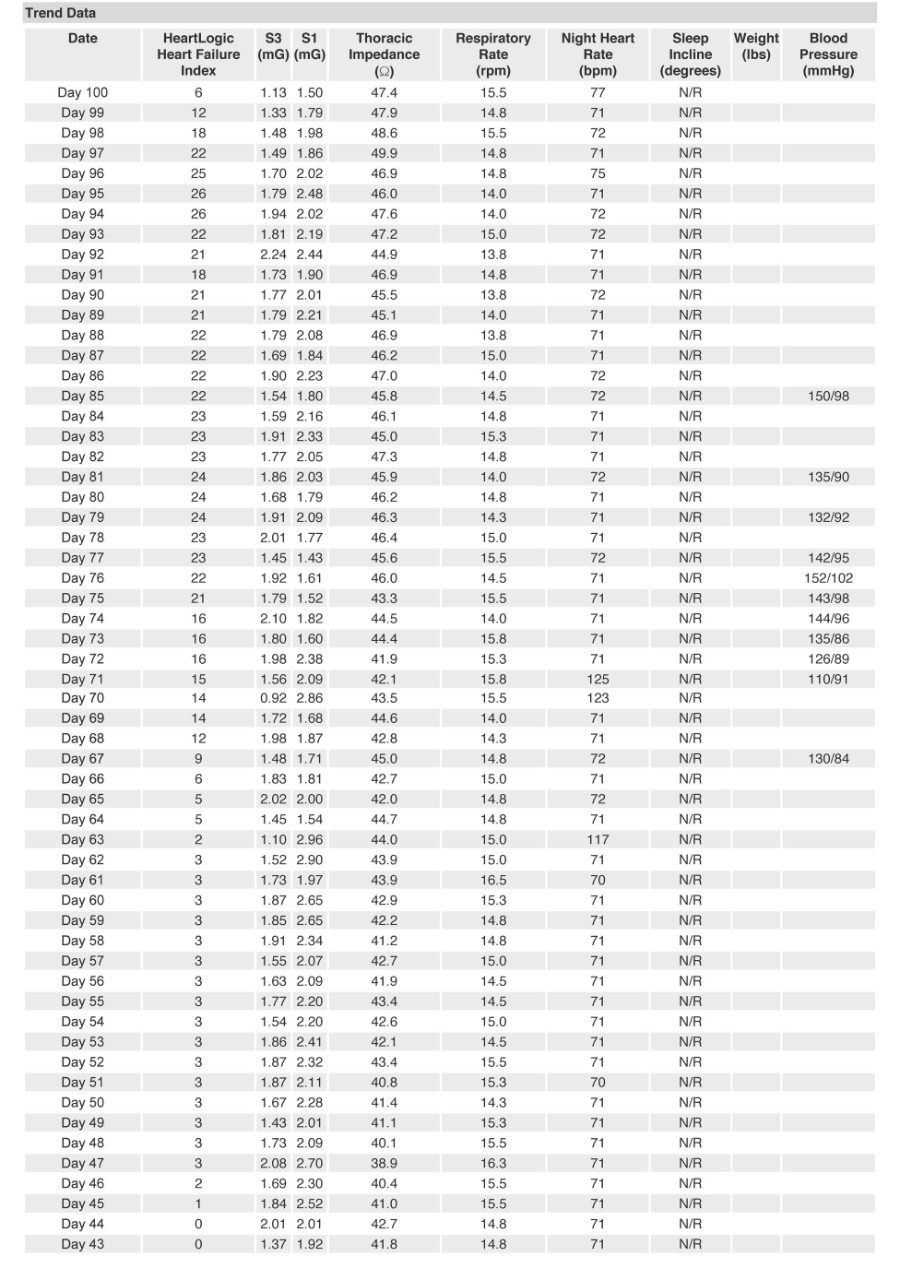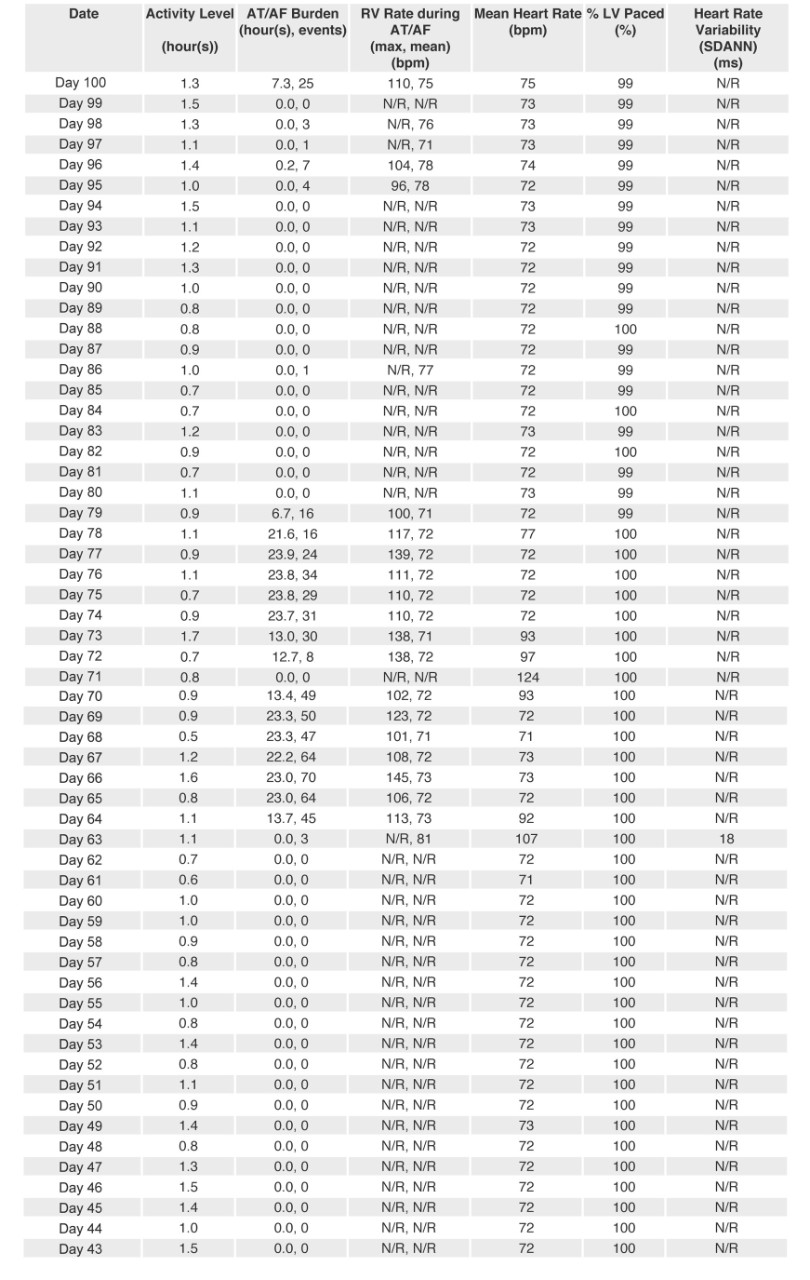
Worsening Heart Failure due to Conducted AT/AF Detected by HeartLogic
Summary
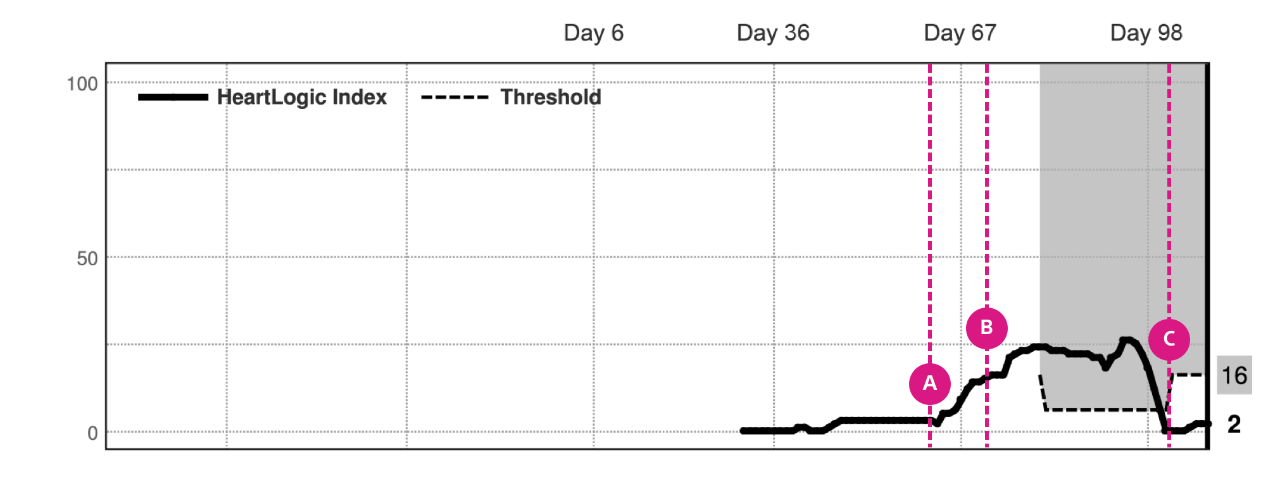
70-year-old female, implanted with a Resonate X4 CRT-D device, in 2018
(A) Day 64: After implant, HeartLogic detected increased AT/AF, experienced by the patient as several days of paroxysmal atrial fibrillation with rapid ventricular conduction. The AF episodes were less than 24 hours/day and therefore did not trigger the AF Burden alert.
(B) Day 73: HeartLogic Alert crossed the threshold level
- nHR and S3/S1 were also elevated
- Complained of feeling “crummy”
- Beta blocker dosage increased
Day 80: nHR dropped immediately, AT/AF dropped after 7 days
Day 90: S3/S1 stayed elevated for 17 more days
Day 98: HeartLogic alert below threshold
(C) Day 101: A subsequent episode of paroxysmal atrial fibrillation had minimal affect on the night heart rate and heart sounds, without triggering a HeartLogic alert. This demonstrates the importance of a multi-sensor approach in evaluating worsening heart failure.
In summary, HeartLogic was able to be more predictive of worsening heart failure than the presence of conducted AT/AF. In the initial alert, AT/AF occurred during an episode of worsening heart failure, but after that period resolved, the second instance of Conducted AT/AF was not associated with worsening of heart failure.
Clinical Data
HeartLogic™ Heart Failure Index
Explore More Case Studies
Find out how a HeartLogic alert led to remote monitoring compliance and a 30-pound weight loss.
See how HeartLogic data during an ER visit led to a patient being treated for worsening heart failure.
See how a HeartLogic alert detected signs of worsening heart failure due to medication non-compliance.

